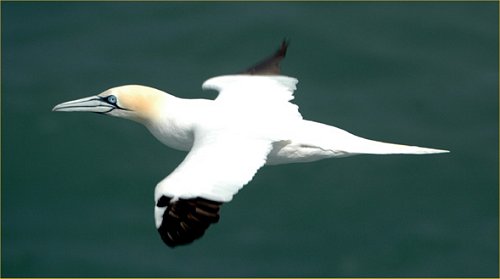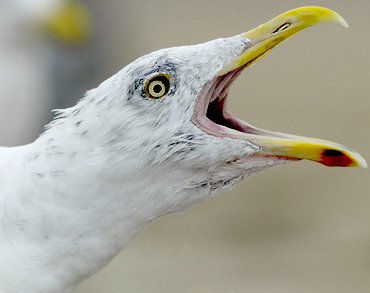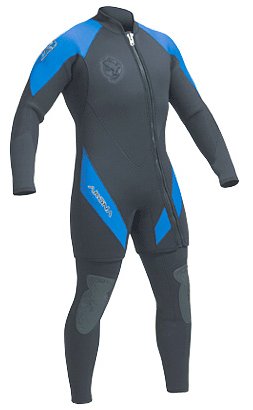Sea Birds - Visitors
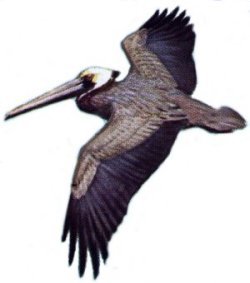
These are birds that are occasional to regular visitors to our region but do not live here year-round. Pelicans are summer visitors, Gannets are winter visitors. Others may appear any time, usually after being blown inshore by a storm. Because they can be carried thousands of miles off-course in storms, many other types of sea birds, from Europe, Africa, South America, the Arctic, and even Asia may make guest appearances as well.
Brown Pelicans Pelecanus occidentalis are southern birds that are occasionally found as far north as Cape May, rarely up to Nova Scotia. However, with the warmer temperatures of late, they seem to be expanding their normal range northward.
These enormous ( 41", wingspan 6-1/2' ! ) sea birds fly low over the water in lines, like geese, plunging down head-first to catch fish.



Storm Petrels are small ( 6.5", wingspan 16" ) birds that are truly sea-going, coming ashore only to lay eggs. Petrels are apt to follow ships at sea and can be quite common offshore, where they flit about just inches from the waves, never alighting. Floating droplets of oil, a by-product of natural decomposition, form a significant part of their diet.
Wilson's Storm Petrel Oceanites oceanicus is considered to be the world's commonest seabird. Leach's Storm Petrel is similar but has a forked tail instead of rounded.
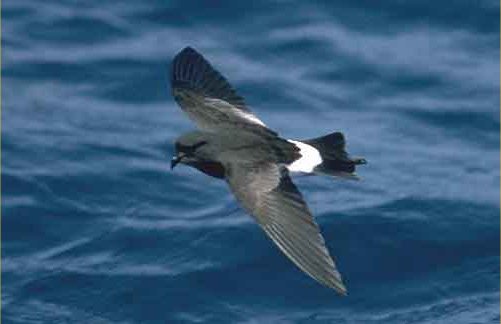
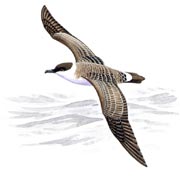
Shearwaters are gull- to tern-sized wanderers of the open sea that are sometimes found inshore. Generally, dark plumage and rounded tails are identifying marks, although distinguishing between species is difficult. Up close, tubular nostrils become evident, a trait shared with related petrels. These are associated with the salt-secreting glands that allow the birds to drink seawater.
Shearwaters fly low over the water, and also dive beneath the surface, "flying" underwater with partially folded wings. They feed on fish and squid. My experience is that these birds are remarkably tame, swimming right up to the boat for tidbits of food.
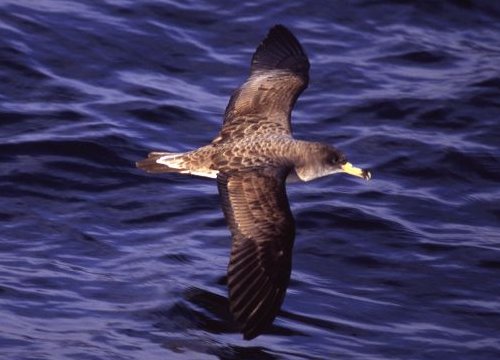

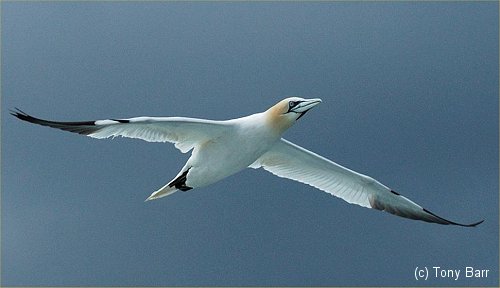
Northern Gannets Morus bassanus are the sole North Atlantic members of the Booby family. They resemble overgrown gulls, larger, with longer necks and wings. Distinguishing marks are a pointed tail, yellowish head, and dark gray or black outer wings.
Boobies are fish divers like their cousins the Cormorants. Unlike Cormorants, though, Gannets make spectacular plunging dives from high altitude into the water after their prey.
Gannets live and breed in the far north, but over-winter offshore in our area and south, when they can usually be seen swooping low over the waves singly or in pairs. They are powerful and agile fliers but clumsy on land, particularly in takeoffs and landings.
